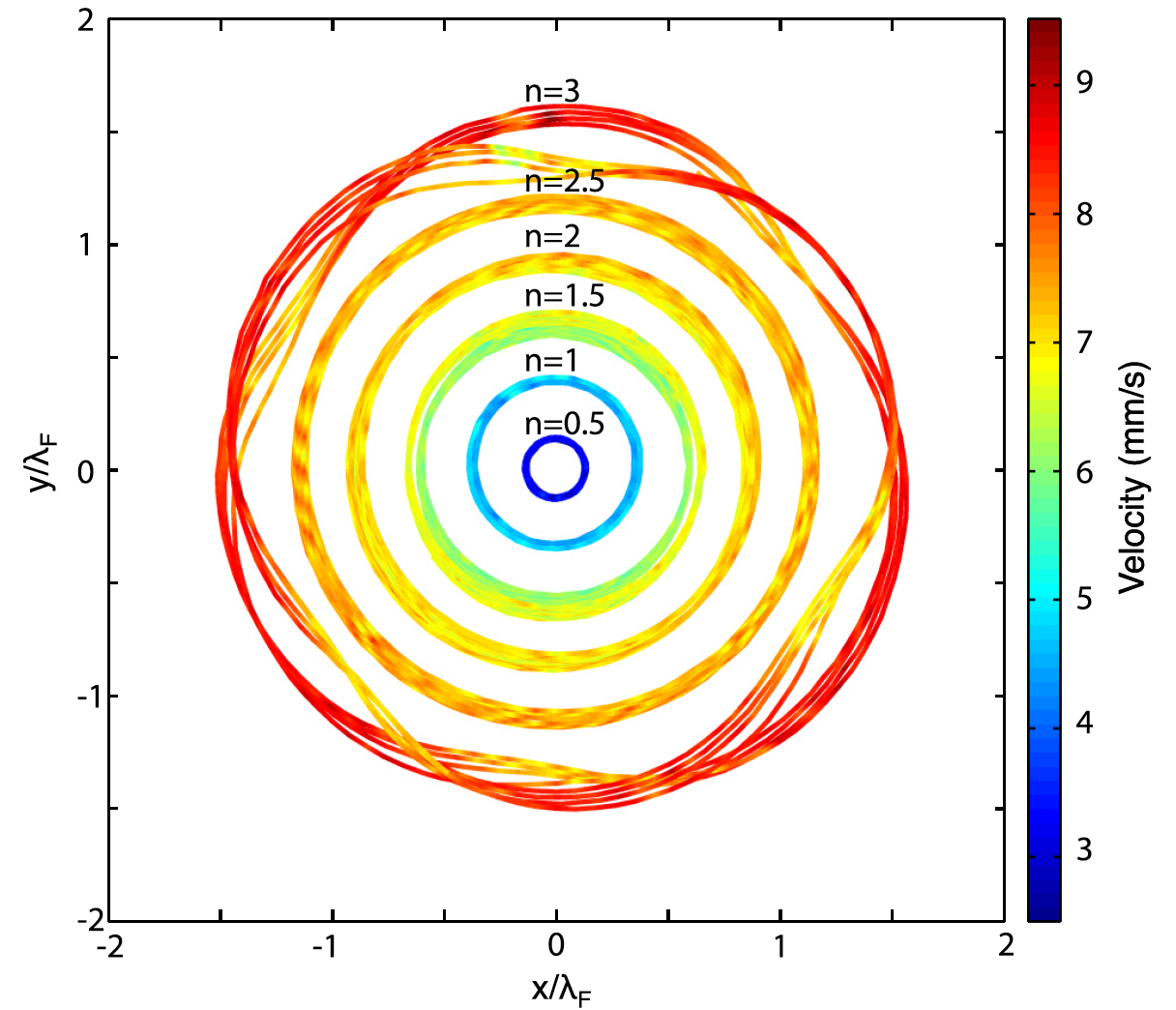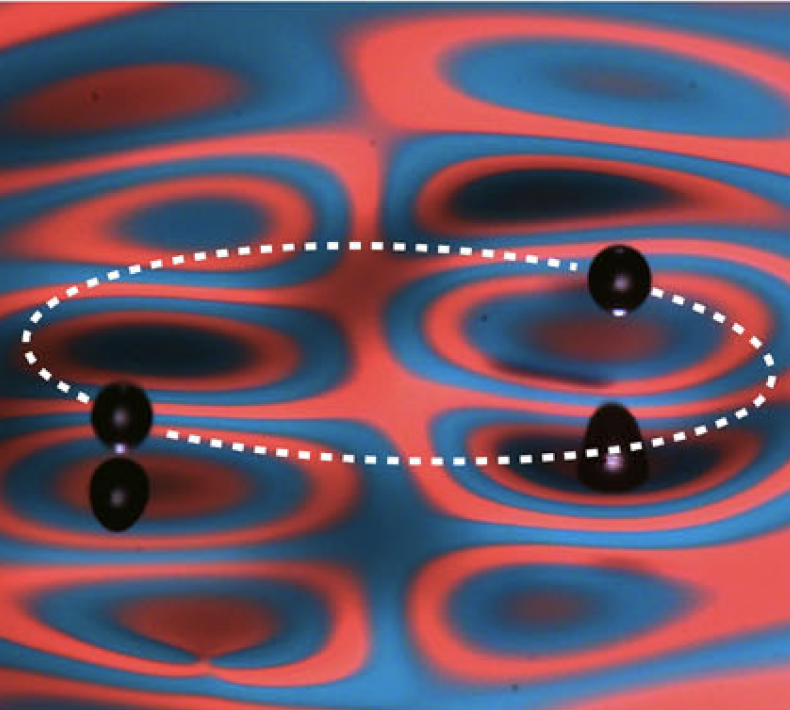
A decade ago, Couder and Fort (2006) discovered that a millimetric droplet sustained on the surface of a vibrating fluid bath may self-propel through a resonant interaction with its own wave field. We here present the results of a combined experimental and theoretical investigation of the interactions of such walking droplets. Specifically, we delimit experimentally the different regimes for an orbiting pair of identical walkers and extend the theoretical model of Oza et al. (2013) in order to rationalize our observations. A quantitative comparison between experiment and theory highlights the importance of spatial damping of the wave field. Our results also indicate that walkers adapt their impact phase according to the local wave height, an effect that stabilizes orbiting bound states.
See paper: Oza, A.U., Siéfert, E., Harris, D.M., Moláček, J. and Bush, J.W.M., PRF (2017).
